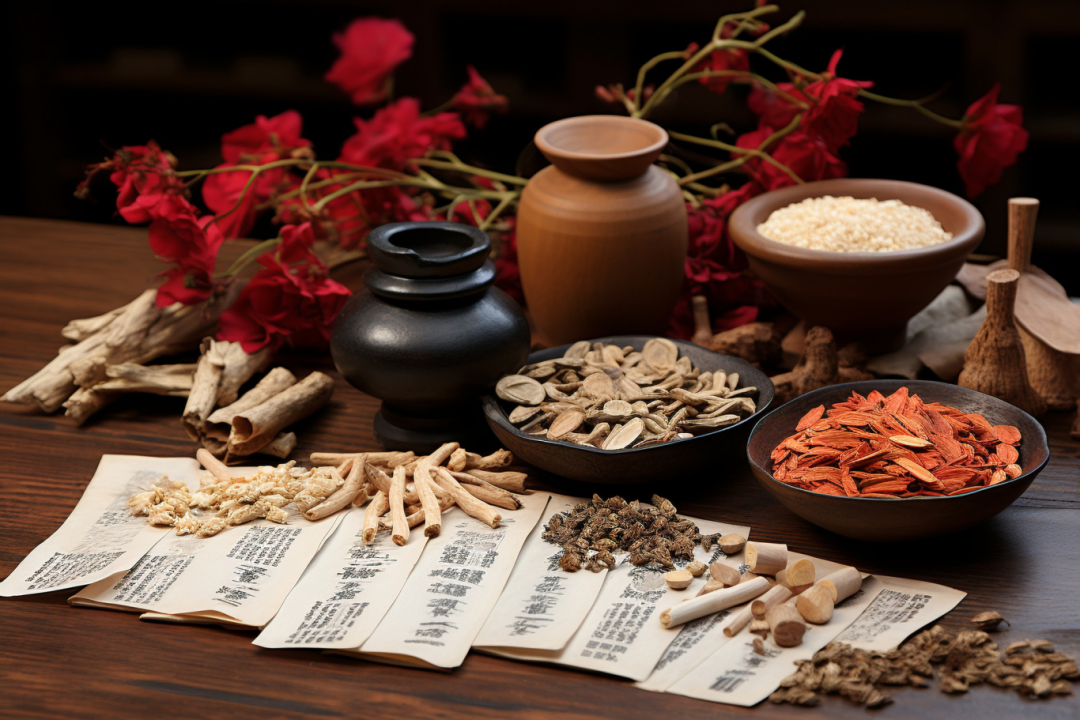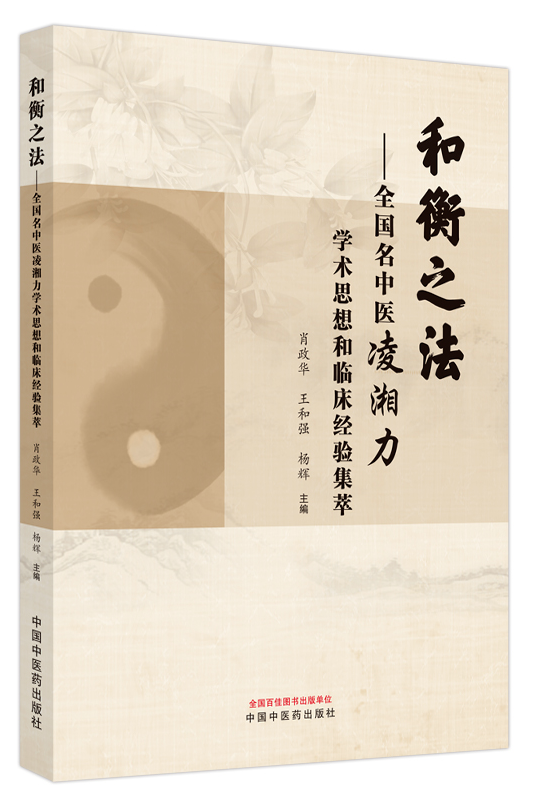Editor’s Introduction
Phlegm-damp is a common condition with various symptoms, such as chest tightness, cough, dizziness, loose stools, and edema in the limbs. This article will interpret the concept of “For phlegm-damp, one should use warming herbs to harmonize it” from the medical sage Zhang Zhongjing, along with three classic formulas for treating phlegm-damp, revealing how TCM understands and addresses phlegm-damp, and elucidating the key role of warming herbs in regulating phlegm-damp.
“For phlegm-damp, one should use warming herbs to harmonize it” is derived from the “Jinkui Yaolue: Treatise on Phlegm-Damp Cough Disease and Pulse Diagnosis”. Here, Zhongjing first coined the term “phlegm-damp” and proposed the general principles for diagnosing and treating phlegm-damp, laying the theoretical foundation for this condition and greatly influencing later generations.
Phlegm-damp disease refers to the accumulation of a certain amount of fluid in a specific area of the body. The normal distribution and metabolism of body fluids depend on the coordinated functions of the lungs, spleen, and kidneys; the lung qi’s dispersing function can regulate the water pathways; the spleen qi’s transformation can allow fluids to ascend and nourish the heart and lungs, while dampness descends and permeates into the bladder; the kidney qi’s warming function can assist the spleen in transforming dampness and enhance the bladder’s qi transformation.
……

Application of “Warming Herbs to Harmonize”
Summarizing the above analysis,“Warming herbs to harmonize” refers to the use of warming and transforming herbs (including those that promote digestion and guide fluids) to invigorate yang qi, open the pores, and regulate the water pathways to achieve the goal of supporting the righteous and dispelling the evil, assisting yang in transforming dampness.
Depending on the location of the fluid accumulation, different warming formulas can be selected.
For example, if the fluid accumulates in the upper jiao (chest and sides), one can use Gui Zhi (Cinnamon Twig), Xi Xin (Asarum); if the fluid accumulates in the middle jiao (stomach and intestines), one can use Sheng Jiang (Fresh Ginger), Gan Jiang (Dried Ginger), Ban Xia (Pinellia), Bai Zhu (White Atractylodes); if the fluid accumulates in the lower jiao, one can use Fu Zi (Aconite), Rou Gui (Cinnamon), Xi Xin (Asarum).
If the location of the fluid accumulation is predominantly superficial, then according to the principle of “if it is on the skin, induce sweating to release it,” one should use warming herbs to warm yang and induce sweating, such as in the Xiao Qing Long Tang (Minor Blue Dragon Decoction); if the fluid accumulation is predominantly internal, then according to the principle of “if it is below, draw it out,” one should use warming herbs to warm yang, transform qi, and promote urination, as stated in the “Jinkui Yaolue: Treatise on Phlegm-Damp Cough Disease and Pulse Diagnosis”: “If there is shortness of breath with slight fluid, it should be resolved through urination,Ling Gui Zhu Gan Tang (Poria, Cinnamon, Atractylodes, and Licorice Decoction) is indicated, as well as Shen Qi Wan (Kidney Qi Pill).”

1. Treating Phlegm-Damp Accumulation in the Lungs with Xiao Qing Long Tang
Phlegm-damp is particularly common when the disease is located in the lungs, with symptoms such as coughing with difficulty lying down, resembling swelling, and edema often seen in the face. The phlegm is often thin, white, and may persist for years, exacerbated by cold, presenting with alternating chills and fever, shortness of breath, tight pulse, and a thick white greasy tongue coating.
With cold phlegm accumulating in the lungs and external wind-cold constraining the exterior, warming herbs are necessary to disperse the cold phlegm internally and resolve the cold evil externally. Therefore, the formula includes Gui Zhi (Cinnamon Twig) for warmth to open yang, Gan Jiang (Dried Ginger) and Xi Xin (Asarum) for their acrid warmth to disperse cold and transform phlegm, Ma Huang (Ephedra) for its acrid warmth to release the exterior and calm wheezing, Wu Wei Zi (Schisandra) for its sour warmth to astringe the lungs and stop cough, Ban Xia (Pinellia) for its acrid warmth to transform phlegm, and Gan Cao (Licorice) for its sweet neutrality to harmonize the formula. This formula can be considered a representative formula for using warming herbs to harmonize.

2. Treating Spleen Qi Deficiency with Ling Gui Zhu Gan Tang
Due to spleen deficiency failing to transform and transport dampness, fluid accumulates below the heart, leading to chest fullness, side fullness, dizziness, palpitations, loose stools, and a wiry slippery pulse.
In treatment, warming herbs are necessary to tonify the spleen and invigorate the middle yang, and harmonizing herbs are needed to promote dampness. Therefore, the formula includes Bai Zhu (White Atractylodes) for its sweet warmth to strengthen the spleen and dry dampness, Zhi Gan Cao (Honey-Fried Licorice) for its sweet neutrality to tonify the spleen and stomach, combined with Gui Zhi (Cinnamon Twig) for its acrid warmth to transform yang and promote qi, Fu Ling (Poria) for its blandness to promote urination, together achieving the effects of strengthening the spleen, promoting dampness, and warming and transforming phlegm-damp, aligning with the spirit of “for phlegm-damp, one should use warming herbs to harmonize.”

3. Treating Kidney Yang Deficiency with Zhen Wu Tang
Due to insufficient kidney yang failing to transform qi and circulate fluids, water and qi stagnate, leading to difficult urination, heaviness and pain in the limbs, chills, diarrhea, and edema; or in cases of exogenous cold damage, sweating without resolution, the person remains febrile, with palpitations below the heart, dizziness, and a tendency to collapse, Zhen Wu Tang should be used to warm yang, transform qi, and circulate fluids.
The formula includes Fu Zi (Aconite) for its acrid heat to warm kidney yang; Sheng Jiang (Fresh Ginger) to disperse and assist Fu Zi in warming yang; Bai Zhu (White Atractylodes) for its sweet warmth to strengthen the spleen and dry dampness; Fu Ling (Poria) for its blandness to promote urination, and Sha Yao (Peony) for its sour and sweet properties to astringe yin, which can also moderate the acrid heat of Fu Zi. This also aligns with the treatment principle of using warming herbs to harmonize.
 Harmonizing and Balancing Methods, Learning Clinical Experience
Harmonizing and Balancing Methods, Learning Clinical Experience “Harmonizing and Balancing Methods: Nationally Renowned TCM Physician Ling Xiangli’s Academic Thoughts and Clinical Experience Collection” Click the cover to enter the Yuedu TCM Bookstore
“Harmonizing and Balancing Methods: Nationally Renowned TCM Physician Ling Xiangli’s Academic Thoughts and Clinical Experience Collection” Click the cover to enter the Yuedu TCM Bookstore
This book elaborates on Professor Ling Xiangli’s academic thoughts and clinical experience from six aspects: medical anecdotes, analysis of harmonizing and balancing methods, medication experience, formula insights, clinical reflections, and case studies, explaining the theoretical origins, lineage, and connotations of the harmonizing and balancing methods, and their clinical applications; it focuses on analyzing the characteristics of commonly used medicinal herbs and formulas, and through collecting and organizing some of Professor Ling’s clinical cases, it reveals his adept application of the concepts of treating similar diseases differently, treating different diseases similarly, adhering to and modifying formulas, and understanding the clinical thinking and meticulousness of the harmonizing and balancing methods.
❖This article is for knowledge sharing only and does not constitute a recommendation or promotion of any medication or treatment, nor can it replace professional medical advice. For any medical needs, please consult and contact a legitimate medical institution.
Previous Recommendations
Two commonly used formulas for curing chronic rhinitis
Five herbs to address prostate enlargement
Two herbs to relieve acute asthma attacks
Copyright Statement
Some content of this article is selected from “Harmonizing and Balancing Methods: Nationally Renowned TCM Physician Ling Xiangli’s Academic Thoughts and Clinical Experience Collection” (Published by China Traditional Chinese Medicine Press, edited by Xiao Zhenghua, Wang Heqiang, and Yang Hui), with all rights reserved by the original author. This article is recommended for publication by Yuedu TCM (WeChat ID: ydzhongyi), and the cover and images in the text are sourced from Shetu Network, with copyright belonging to the original authors. If there is any infringement, please contact for removal. Unauthorized reproduction is prohibited!
✦Editor: Zhang Pingxin Lei Chang
✦Review: Liu Zhe
✦Typesetting: Li Peishan Guo Dongshan
✦For reprints, submissions, collaborations, and bulk book purchases: 17701086692 (WeChat ID)
Click “Read the Original Text” to purchase the recommended good books in this article Share
Share Collect
Collect Click
Click Look
Look

